Through art, we can express creative skills based on hobbies, preferences, or anything else within us. It might be nature, life in general, and even cars, specifically JDM cars. JDM car art has been around for a while, with the earliest forms being expressed through photographs, hand drawings, illustrations, and sketches. These are evident in JDM car culture magazines such as Itasha and Initial D, the Japanese car anime we all grew up watching and remains a favorite among JDM car enthusiasts today.
Expression of JDM car art through hand drawings, illustrations, and sketches wouldn’t be possible without photography, as not all forms of visual art are created from scratch. Photography is still being practiced today, and it gave rise to photoshopping. So what exactly is photoshopping, and how does it help express JDM car art? There are various definitions, but photoshopping involves enhancing art based on how one would love to view it. But photoshopped art has to start from a photographed image, which explains why photoshopping would only exist with photography. It’s even in the name.
However, all forms of expressing fine JDM car art require skills only a few possess. What if we told you that it’s possible to create JDM car art with minimal effort? And the result will be similar to or better than hand drawings of a skilled artist or photoshopped images. This is possible through AI (artificial intelligence), which generates various forms of art through algorithms and rules set in place. AI analyzes tons of images to produce one final piece of art based on the user’s description of what they want to see.
Will AI deem skilled artists, writers, and other creatives jobless? Will it change how we perceive art? Professor David De Cremer once said that AI would never replace human leadership capabilities that enable us to be creative and have different perspectives. From our perspective, we people will change how we view art from skilled artists and AI-generated art.
Artists vs. AI
Now that we are in the era where humans are being compared to AI in different fields, how do human artists compare against art-generating AI? Artists draw inspiration from visual experiences, memories, and the ability to think to create art. On the other hand, AI generates art based on the user’s text description input. But since AI doesn’t draw inspiration from anything, it creates art by analyzing captions and alt text on the internet similar to the description to come up with a final piece. Think of it like recycling plastic bottles into flower pots.
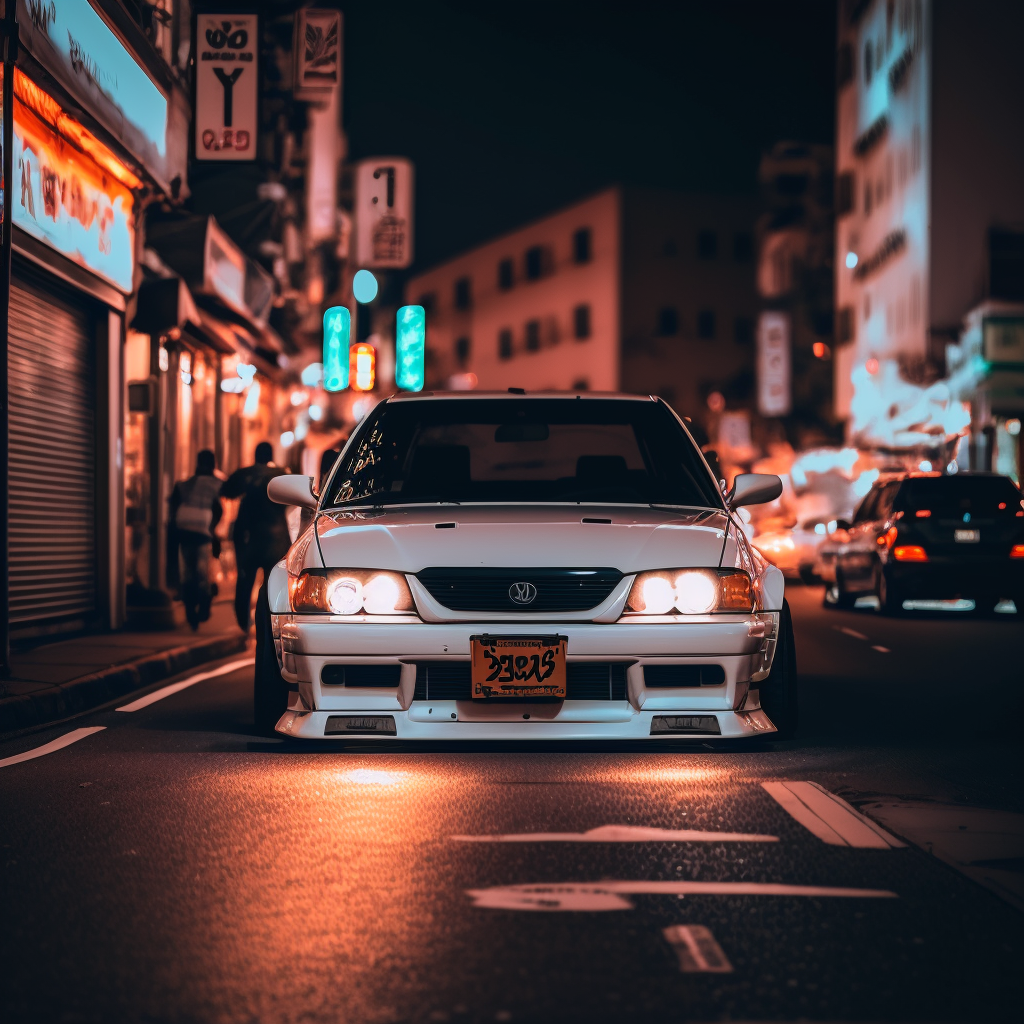
AI has one significant advantage over artists, time. Creating AI-generated art takes a shorter time, and the process is more straightforward. For example, in this case, when generating JDM car art, all that is required is inputting the car’s make and model, which is the most basic information when using AI. The result only takes seconds or a few minutes to materialize. If you’re not impressed or prefer more detail in the art, all you have to do is input the omissions or extra information until you get the desired result.
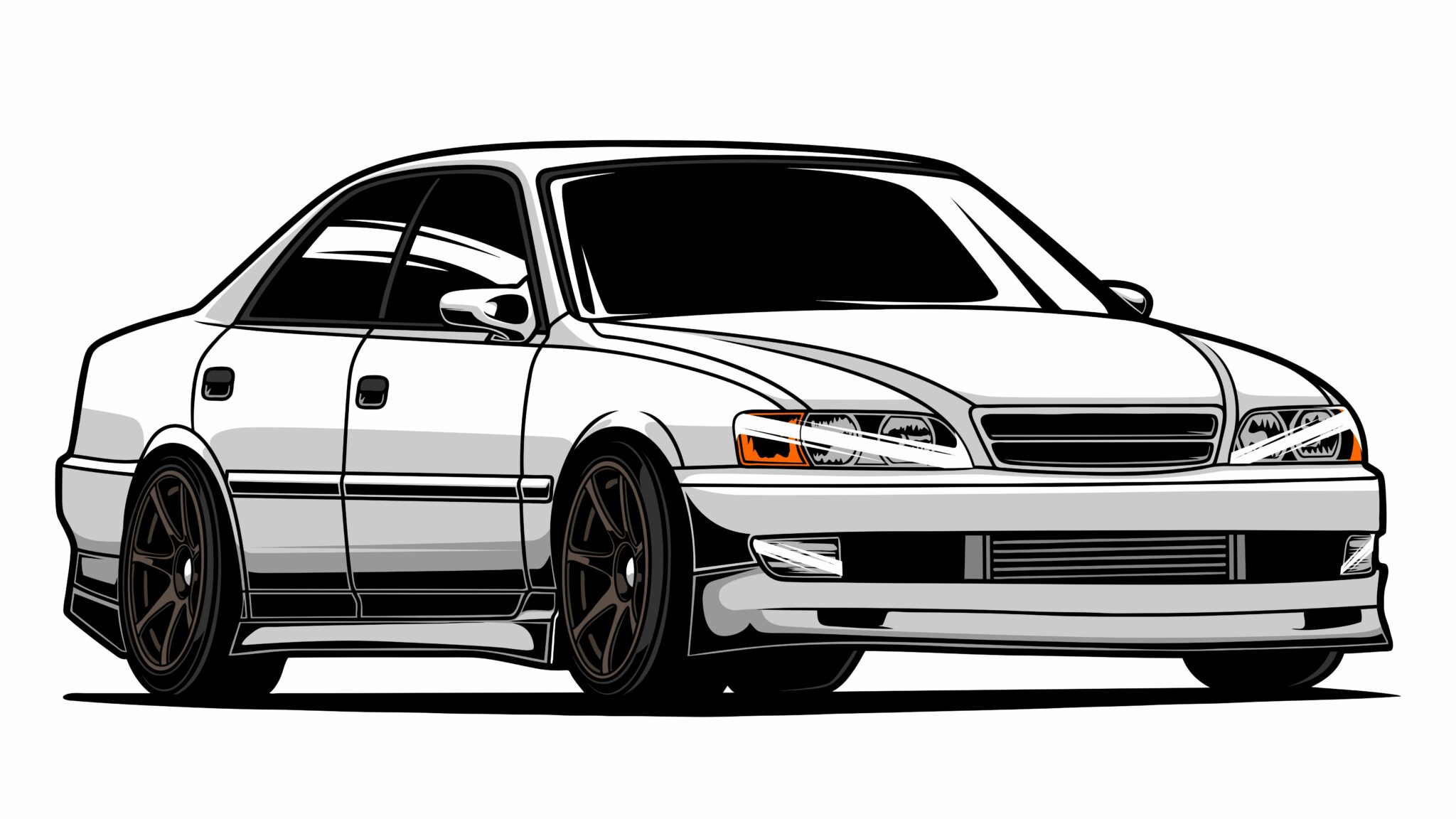
Artist-generated JDM car art can take quite some time. Even the barest sketch takes more time for an artist to complete than when using AI, and the result is only a rough idea of the final piece. Detailed art pieces can take days and sometimes weeks to finish and more time to change or add extra details. Artists charge more if essential attributes to be added or omitted to the art are excluded during conception, especially if the piece has to be redone wholly.
View our JDM Car Vector Imagery
How to Create JDM Car Art with AI
Creating AI art is as easy as describing what you want. There are several different platforms you can use to generate AI art such as:
To start you have to have an idea of what you want your art to look like. This could be what you want the car to be, features about the car, and where you want the location to be, the best part is you can make It as detailed as you want it to be.
Once you have the idea all planned out, you can begin using one of the AI platforms mentioned above to generate your art. Midjourney is the highest-quality AI art generator out right now. It allows you to input specific keywords related to JDM culture such as “stance”, “tuner”, and “drift”, to reflect the style you are going towards.
To take it a step further you can apply more prompts to make your generated AI art more photorealistic. These prompts can be:
- Photorealistic,
- Ultra detailed
- 35mm photography
- shot on sony mirrorless camera
All these prompts and more can be found here
In our example we want a Nissan Silvia in japan, you’ll always want to begin your prompts with “/imagine. Our prompt will be “/imagine Nissan silvia drift car, white color car, in Japan in a neon city at night, shot with a sony mirrorless, 35mm, photography, cinematic, anti-aliasing, CGI, –v 4

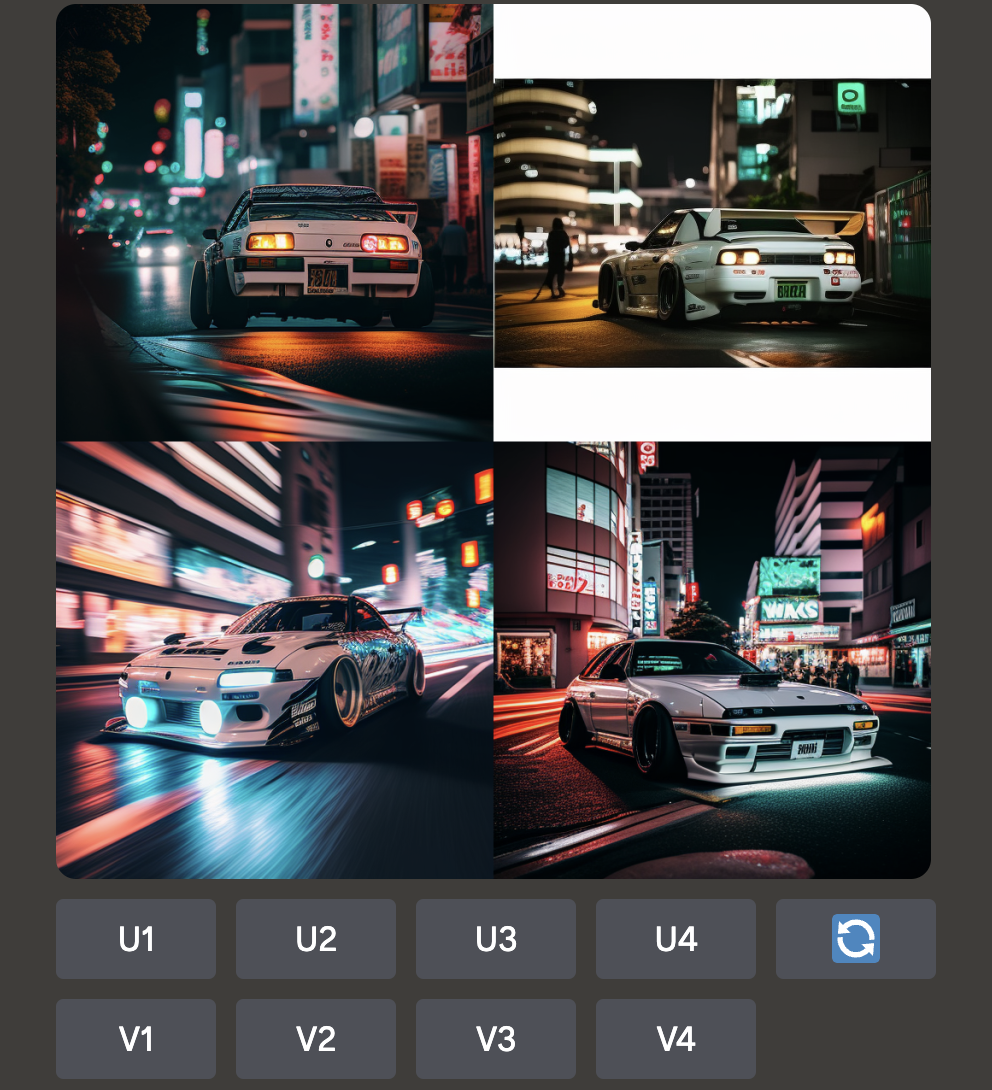
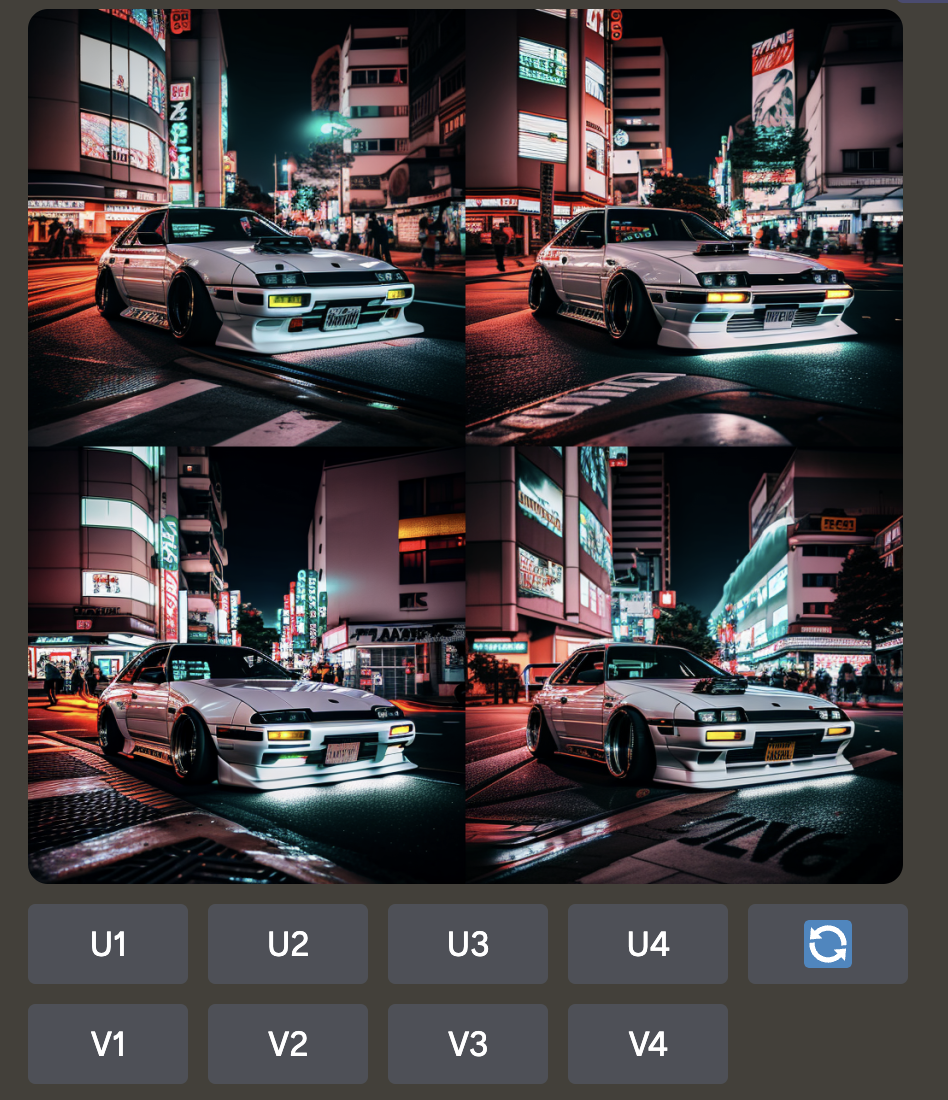
From here you can choose to create more variations or create a high resolution of one of the variations. We will go with the first one (U1)
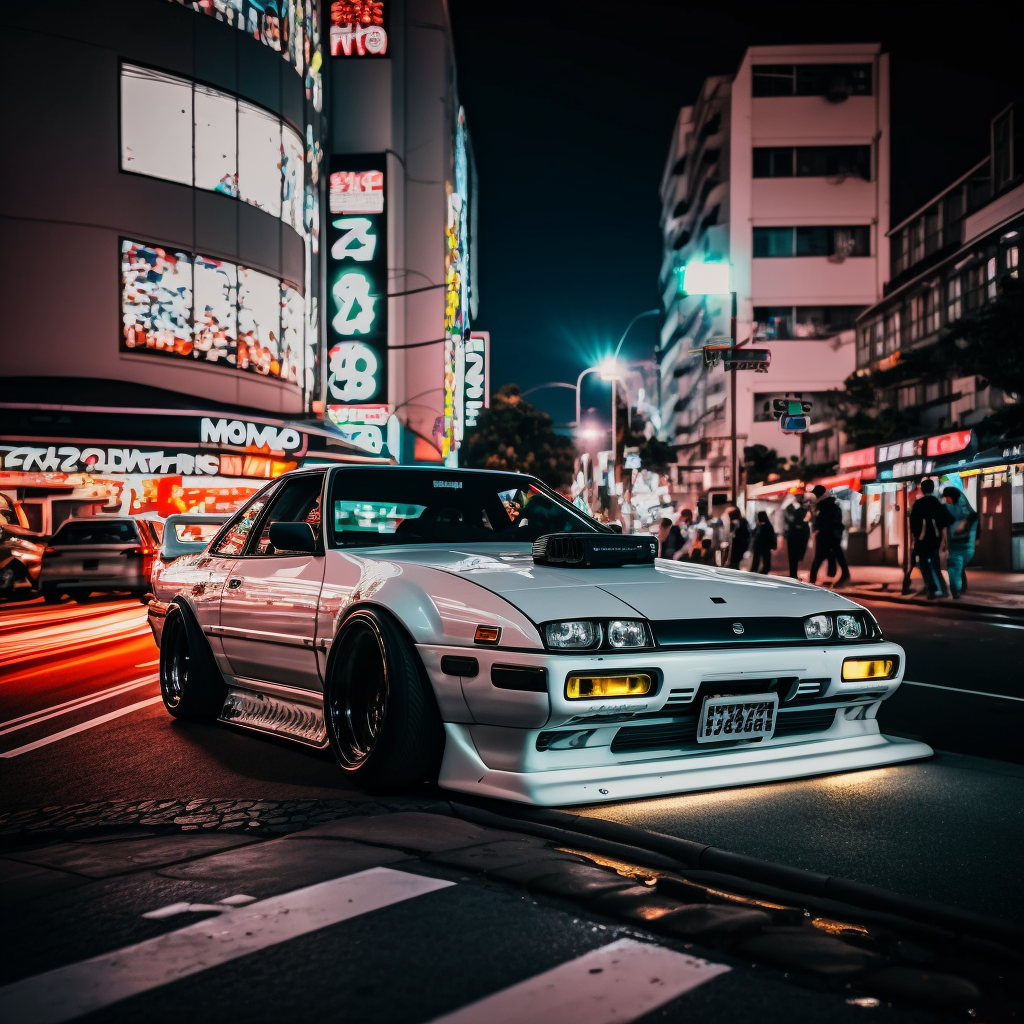
Just like that, you went from typing a prompt to have it created in under a minute
Top JDM Car Artists to Follow
Possibilities of AI-Generated Art

White r32 Nissan Skyline GT-R in kyoto at sunset, rain, cherry blossoms, reflection, side profile, sunset, photography, 8k, realistic, shot on sony mirrorless camera, ultra detailed, photorealistic, –v 4
Everyone using AI to generate art is doing it for fun or to see how good AI-generated art can be since it’s available to anyone with any smart device, including mediocre smartphones and laptops. But what are the possibilities of AI-generated art, particularly in the JDM car scene? Soon car owners will start building their cars taking inspiration from AI-generated concepts. For example, creating custom body kits, wraps, wheels, and wings is made easier since all that’s needed is the user’s input.
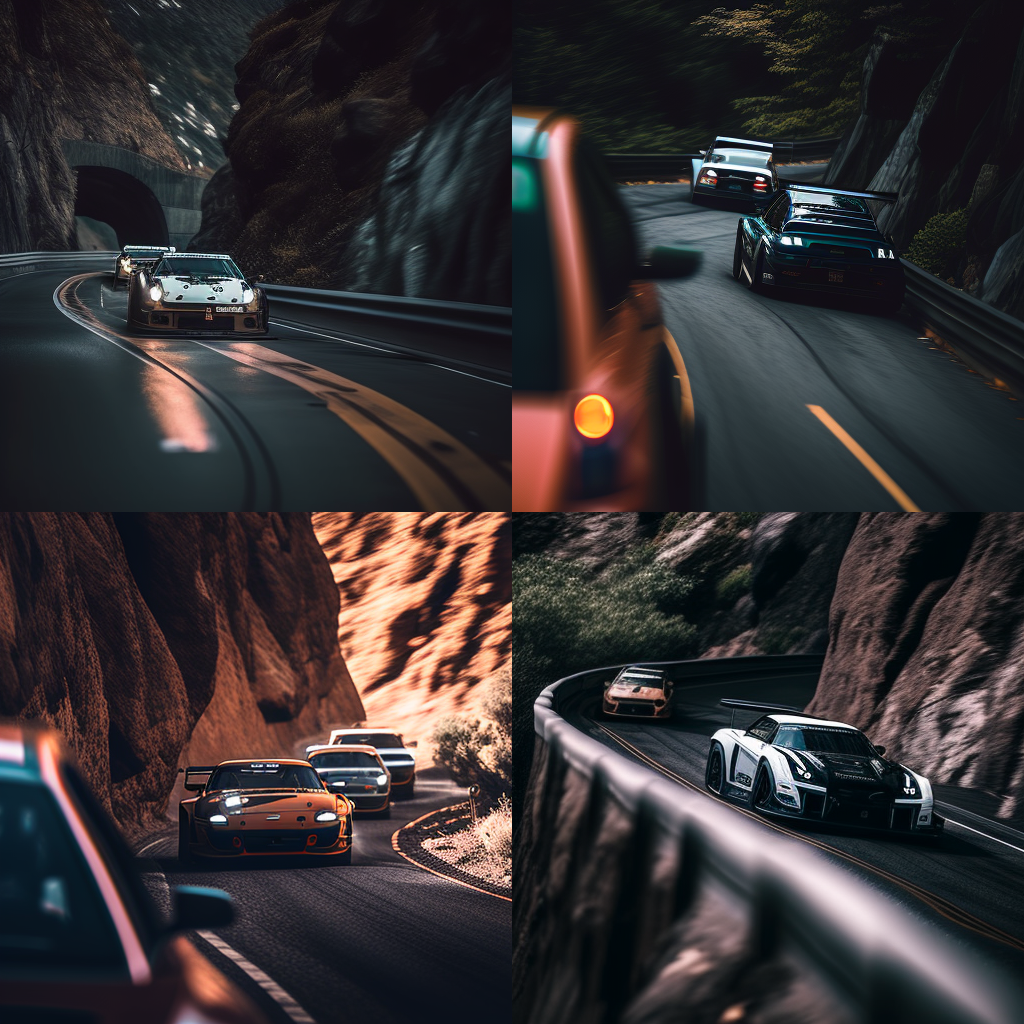
JDM cars driving down a mountain shot with a sony mirrorless, 35mm, photography, cinematic, anti-aliasing, CGI, –v 4
Owners that have cars with low aftermarket support will benefit heavily from this since they save on time and funds that could be spent to make custom parts concepts. Also, AI can generate backgrounds if there’s a concern about how the car would look in the street or any other setting. Artists and photographers should take advantage of that to expand their creativity if coming up with a new piece of art or location for a photoshoot is strenuous. For example, a Nissan Stagea with an R34 swapped bumper mock-up or a wide-body Miata with a massive wing parked at a 7-Eleven parking lot.
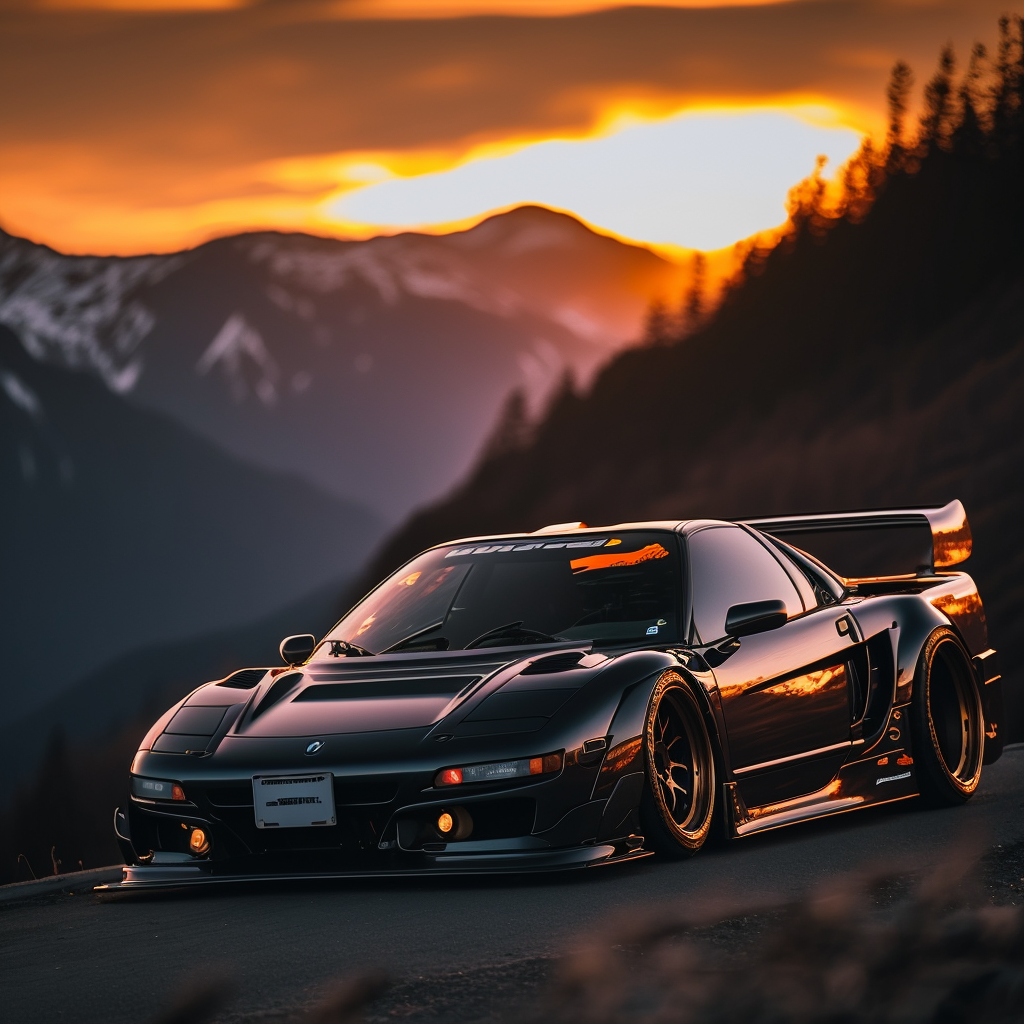
Photo of a 1998 Honda NSX, with widebody kit, driving in the mountains of Japan, sunset, motion, shot on a Sony mirrorless camera, DSLR, 85mm lens f/8, ultra detailed, 8k, –v 4
If you are using AI art generators for fun and are a JDM car enthusiast, try generating AI JDM car art wallpapers for your phone or PC. When doing this, ensure you include the image dimensions in the prompt for good fitment. The dimensions can also be edited after you are satisfied with the generated image’s quality.
Pros and Cons of AI-Generated Art
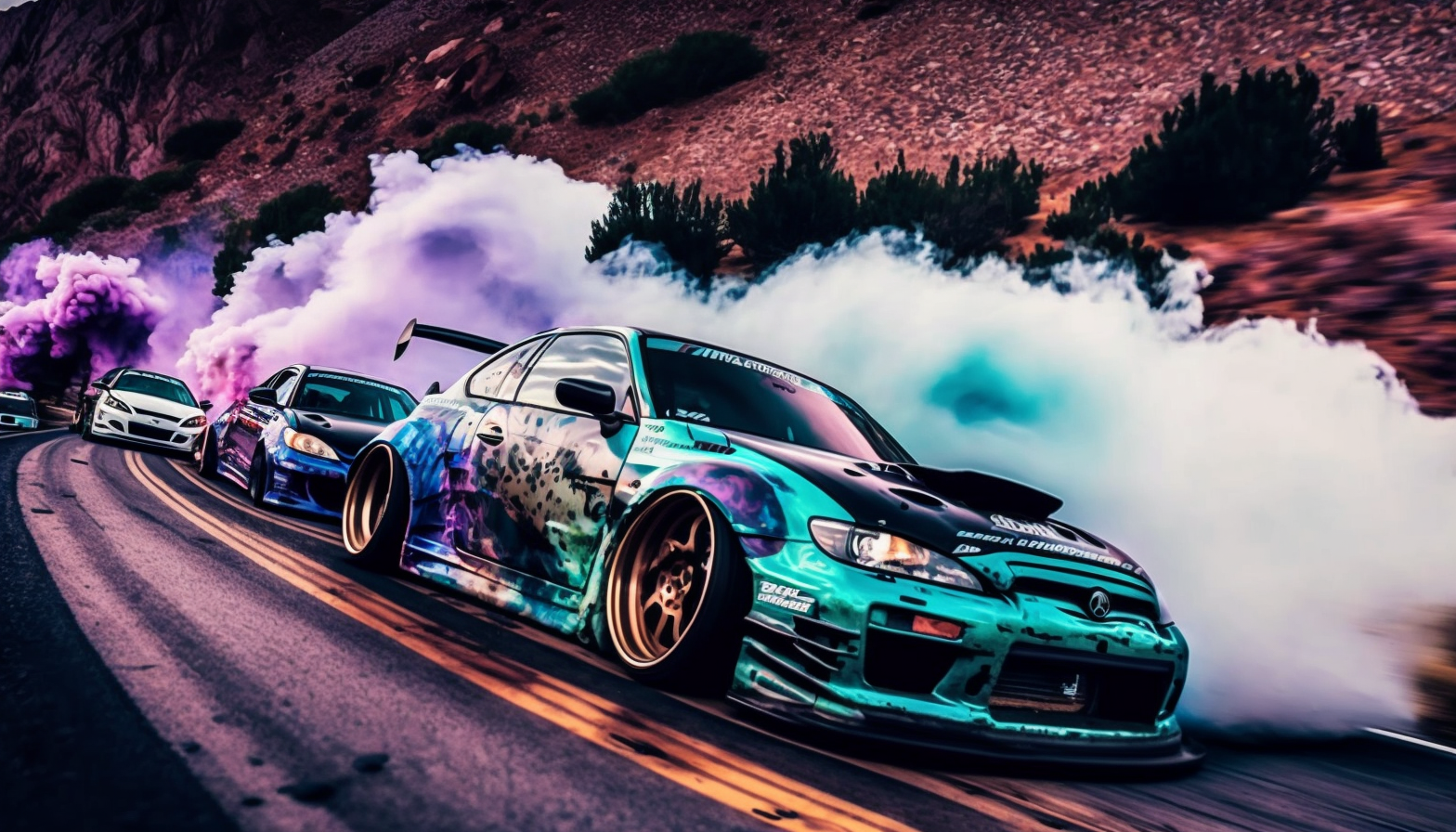
Jdm cars drifting down a mountain with tire smoke, HDR, 8k
Pros
Rapid Turnaround Time
One of the reasons more people will move towards AI is that it generates art in a record time. A few seconds is all that’s required to create a simple piece which can then be enhanced by inputting prompts to change the desired details. To an untrained eye, AI-generated art is indistinguishable from what a human artist would take days, weeks, or even months to finalize. This plays to the advantage of magazine illustrators, editors with a short turnaround time, school teachers, and others who rely on art to entertain, teach or express something.
Almost Near-To-Perfect Results
With AI software generating art in seconds, you’d be wrong to think the results would be mediocre, undeserving of all the attention and internet craze. Sure, it’s not 100% perfect, but AI-generated art pieces compared to a mid-level artist’s art would be considered similar, with indifferences on either side. A simple AI two-word prompt will generate perfect results compared to a beginner human artist’s art, and the results get more detailed with specific prompts to change desired aspects.
However, it depends on the AI software, the most common ones being DALL.E, Midjourney, Stable Diffusion, Jasper Art, and NightCafe. Midjourney and Stable Diffusion generate high-quality art pieces, including JDM car art pieces, but they require clear-cut prompts and the. DALL.E, one of the earliest AI art software, generates average art pieces even from simple prompts, which is the same for other AI software. NightCafe might not produce the best art, but it doesn’t rely on images scrapped from the internet as an inbuilt algorithm sets it apart from others, ensuring 100% unique and original art.
Advancements in technology enable AI art software to evolve and produce competitive art pieces to the extent of establishing AI art marketplaces. But before that, AI-generated art could be sold on regular art marketplaces and sold well against art done by human artists. For this reason, a considerable percentage of human artists loathe AI art software and push for regulations to be implemented.
No Experience Is Required
Unlike human artistry, which requires years of learning and experience to perfect skills, AI art software requires no experience or skills, making it the perfect hobby for anyone interested in art. Some creators have paywalls and limited generated images per user if using a free trial, but there are still free AI art software equally as good. Is AI limited to the type of art it creates? No. You can create anything from JDM car art of your favorite JDM car to variations of an old painting you saw in a museum and didn’t like a particular aspect.
New artists with an idea can express it through text and feed it as a prompt to the AI software to generate art. They can then use the result as an inspiration to create a personalized new style of art. Also, artists can predict an outcome of a piece of art by enhancing an image of a sketch using AI. This helps determine whether it’s worth continuing with the original idea or whether a different approach should be taken based on the AI-generated piece. The only downside to this is that experience artists demand notes must be made if AI is used in the creative process.
Cons
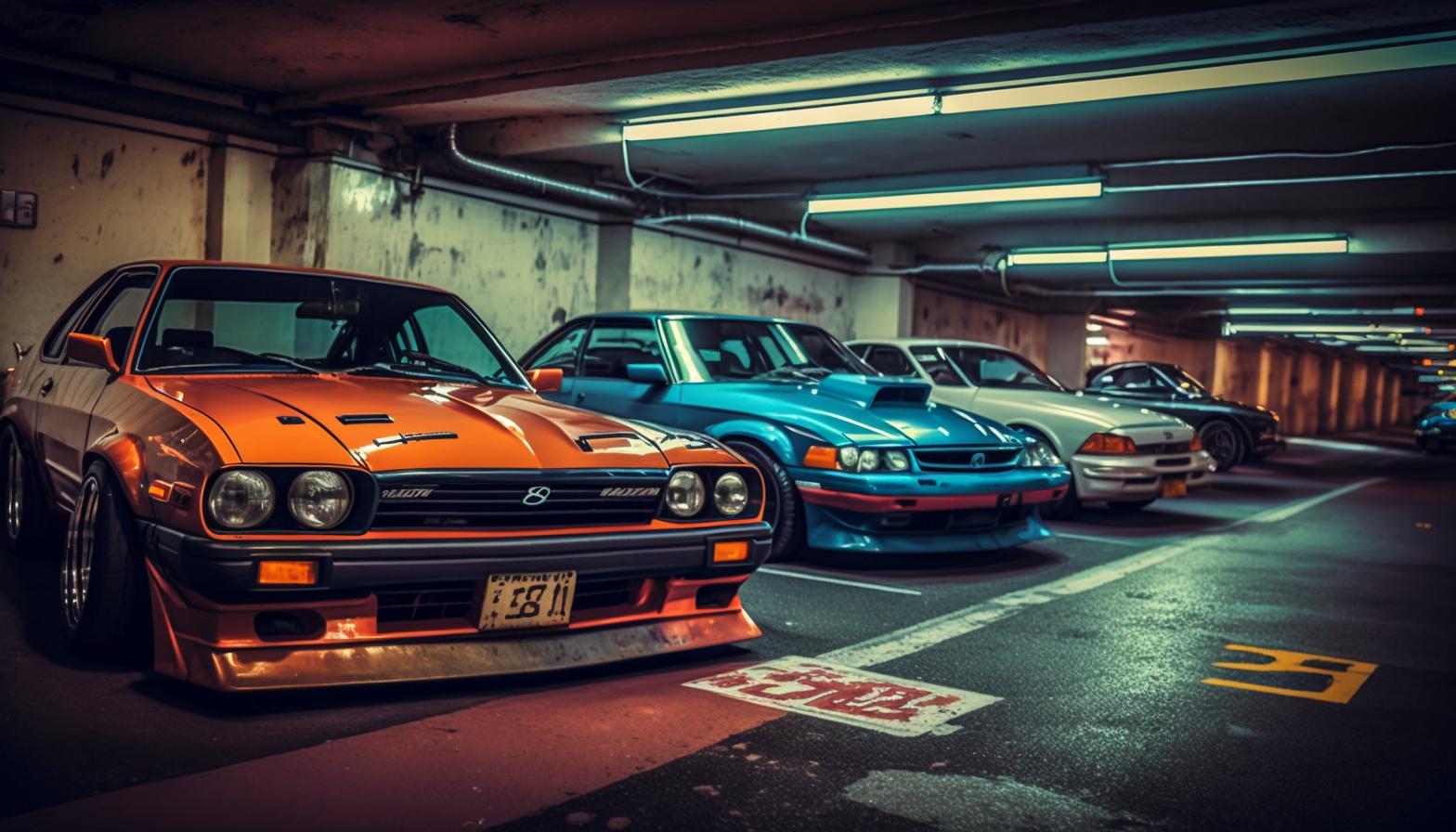
Jdm car meetup at an underground parking garage, HDR, 8k
AI-Generated Art Isn’t Considered “real art”
It might be difficult to distinguish between art done by human artists and detailed AI-generated art. Still, AI-generated art is not considered “real art”, especially by creatives and enthusiasts. This makes sense since most AI software and programs generate art by being fed images done by other artists. AI doesn’t consider copyright protection or other measures put into place to prevent other artists from replicating or copying, which qualifies as stealing as it doesn’t credit or compensate artists.
Another reason AI-generated art isn’t considered real art is that AI software doesn’t possess human creativity, emotion, and realism reflected in all art pieces done by humans. Some call it a new art form as the lack makes it unique. AI also can’t develop new ideas, even for the most basic art pieces, and is entirely dependent on algorithms created by creators and users’ prompts.
AI Art Generators Will Flood The Creative Sector
The intelligent technology sector is filled with many investors and bright minds, and it won’t be long before we see other AI generators. Existing ones, such as Midjourney, are already facing high demands moving the creators to force paywalls to reduce traffic. The AI art market will flood with sellers since everyone with a laptop or smartphone can create AI art, and the interest will soon die out.
Artists’ woes on implementing controlling laws and regulations to protect creatives will never be heard since AI art generators are generally new, and legislators need to figure out what to do about them. They will also lose revenue and status due to the high reliance on AI art generators to create art though this can also be blamed on the users. Luckily, efforts are already being made to educate the masses to use AI for personal uses and rely on artists for commissioned art pieces.
Examples of AI generated JDM Car Art
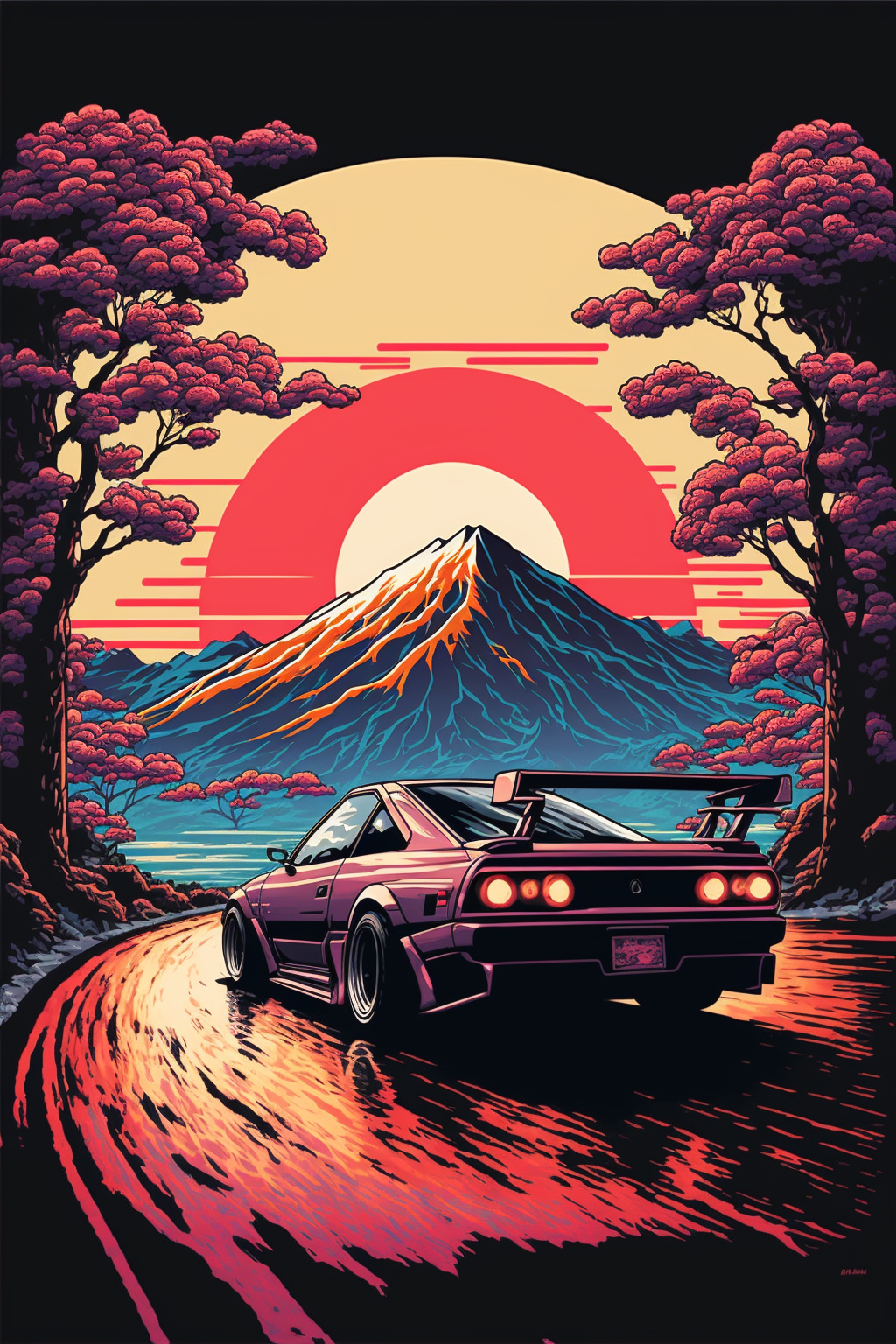
Prompt used:
JDM, anime style, Ukiyo – e art style, outrun
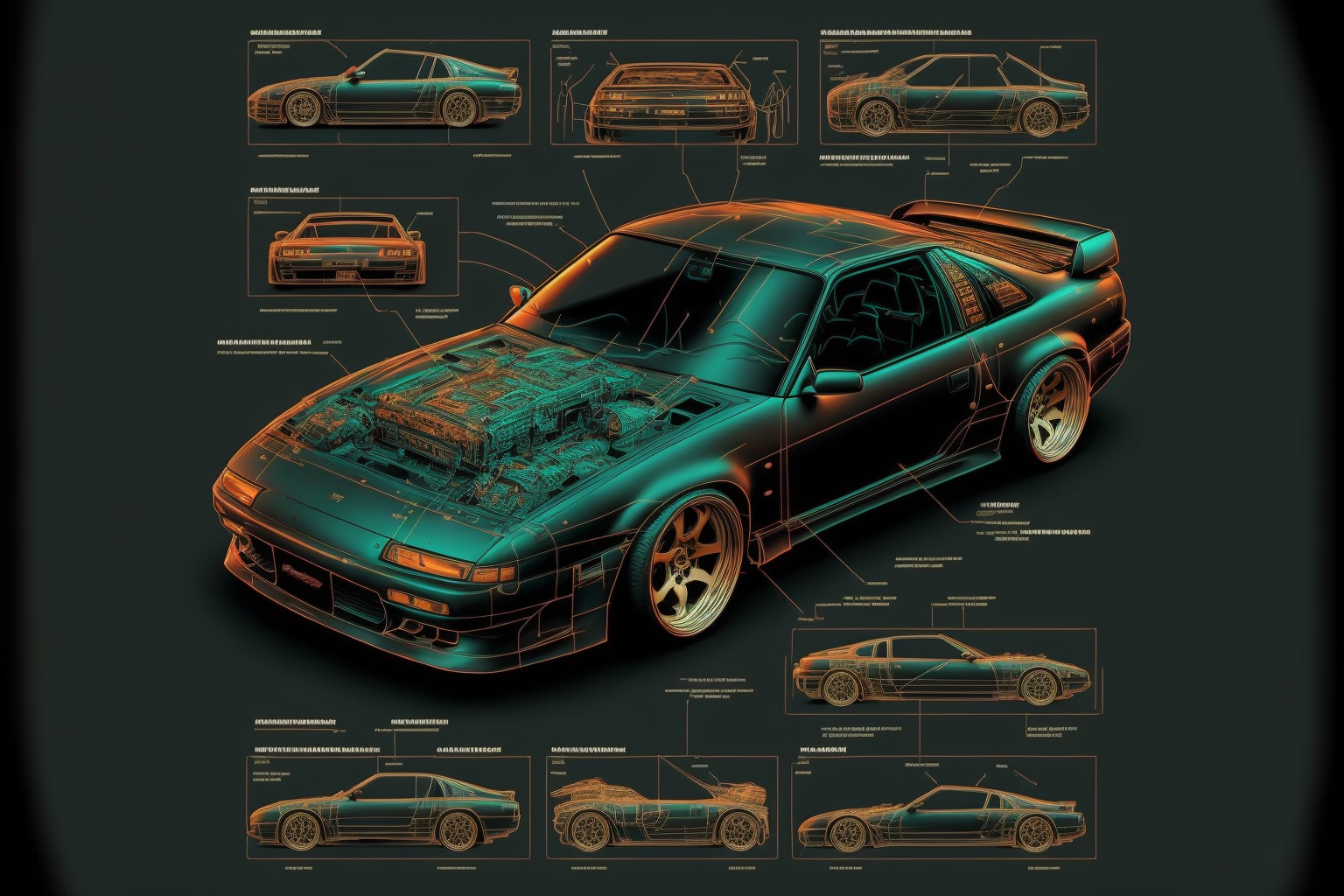
Prompt used:
Infographic of a nissan 180sx, highly detail, sharpen, holographic, blueprint style, colored
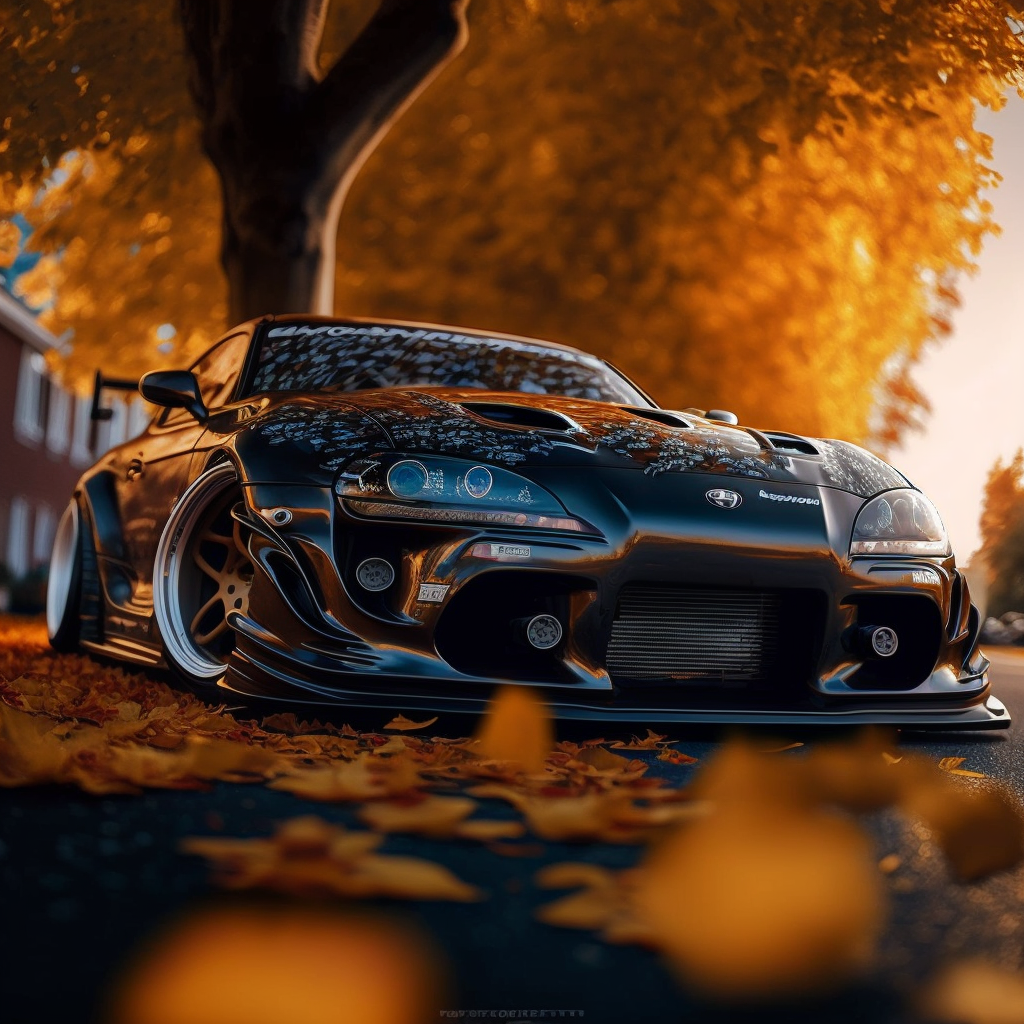
Prompt used:
TOYOTA SUPRA, Slammed, ray tracing, HDR, all colors and connections, wind blowing photo hd, extremely detailed with rich colors, Photography, Depth of Field, high contrast, Cinematic Lighting, ethereal light, intricate detail, extremely detailed, incredible detail, full body, full color, 5D, Shot on 70mm, DOF, Multiverse, Super – Resolution, ProPhoto RGB, Weta Digital,
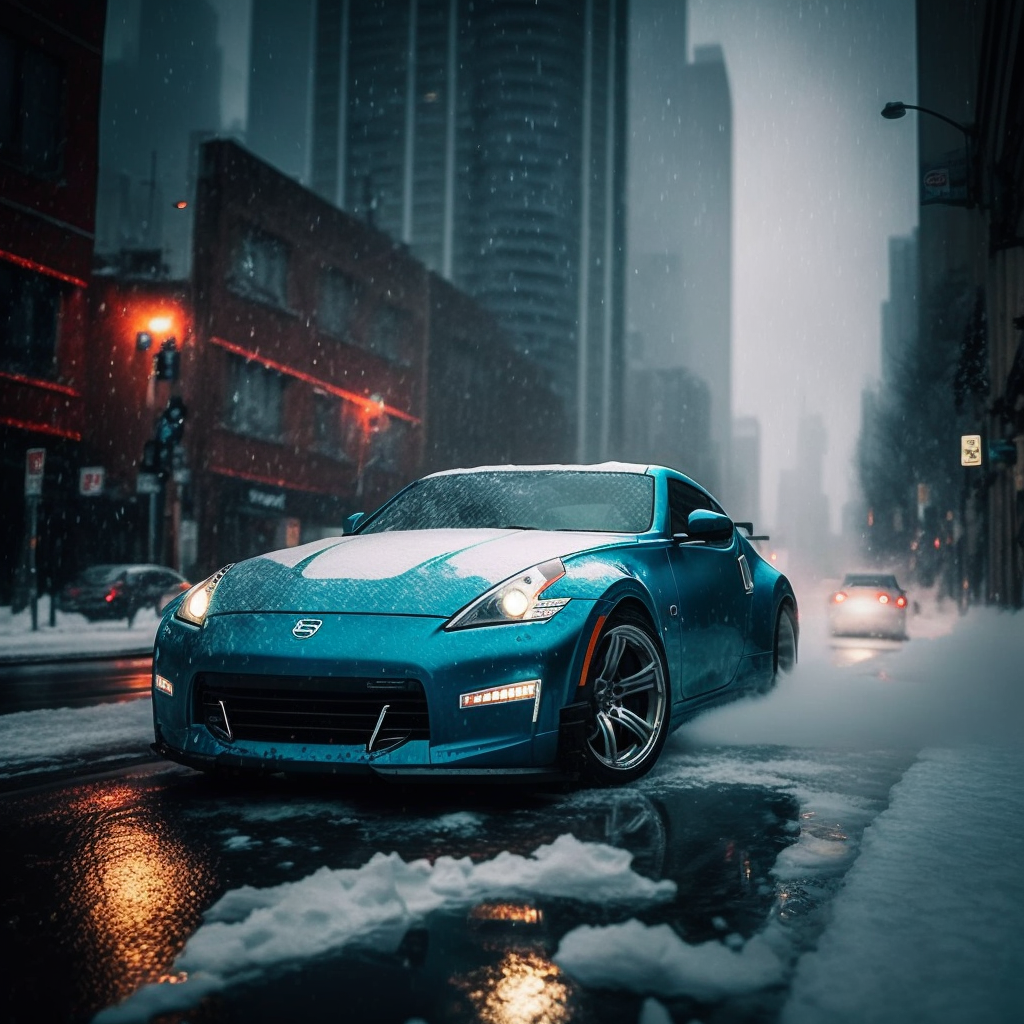
Prompt used:
Nissan 370z in downtown Los Angeles, heavy snow, cinematic post processing, static film texture, smoke, mist, brutal and dark, 80mm, blue cyan and red color palette, Collateral movie LUT, hyper realistic and sharp quality, photography inspired
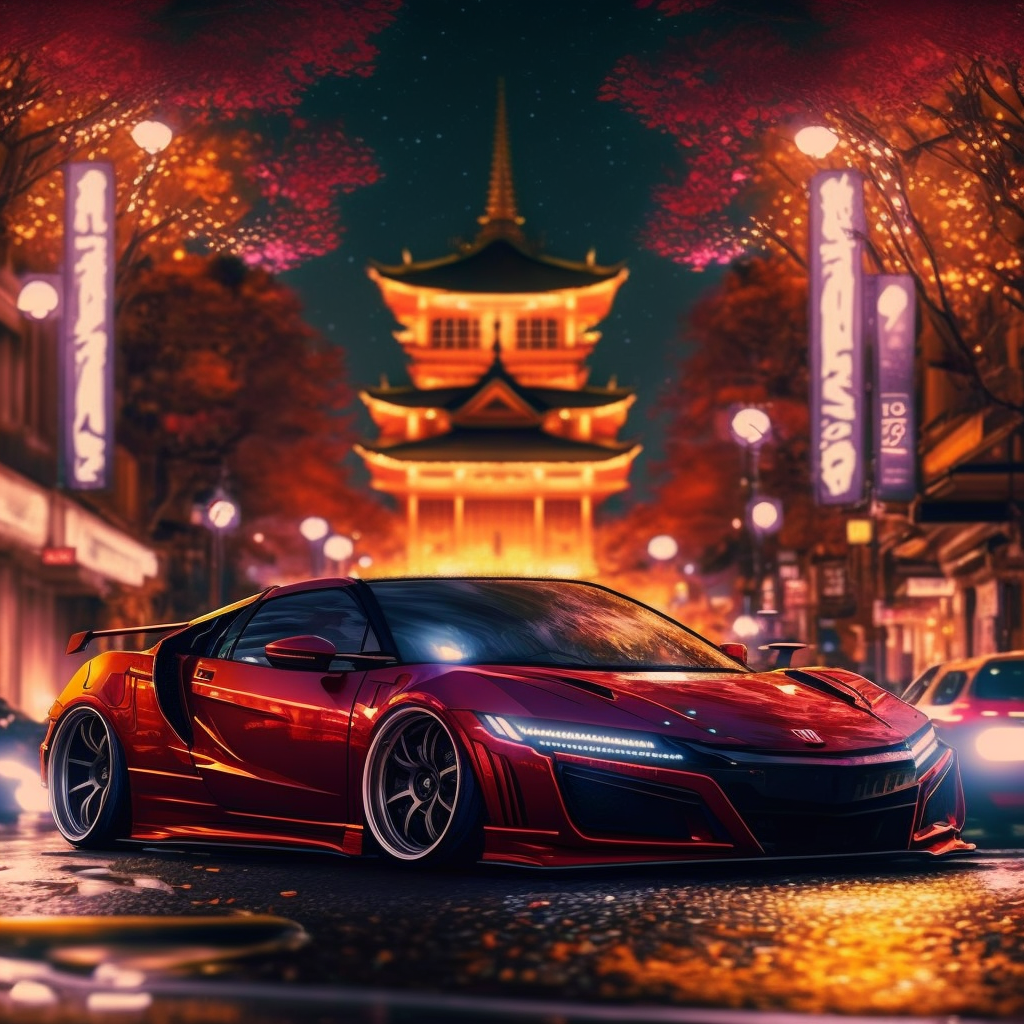
Prompt used:
Red honda nsx stanced, infront of a temple, tokyo, japan, night time, realistic, bokeh
Should Artists Be Concerned?
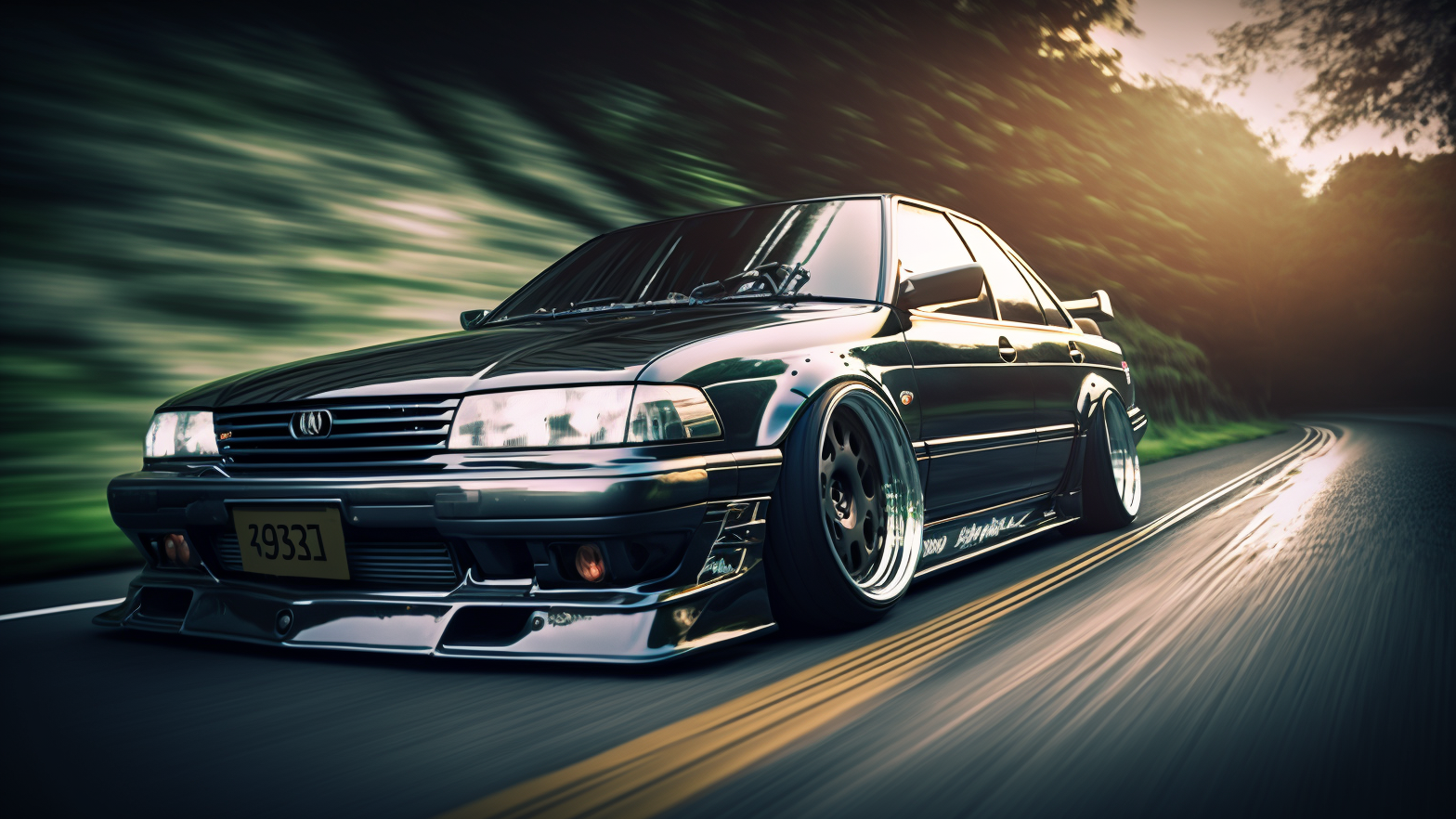
We are still in the early stages of intelligent technology being massively used in the creative sector, giving artists leeway to adapt. Yet, like humans, AI evolves, and artists should expect AI art generators to do so, thus improving the quality of art generated which is a major concern. Using precise and well-detailed prompts is also slowly becoming a skill. It enables users to generate indistinguishable pieces of art using AI software, thus giving art generated by artists noticeable competition.
However, just because AI art generators exist and there’s a chance that they’ll advance and produce better art than they do today doesn’t mean artists will be rendered useless. But there’s that gut-wrenching feeling that AI developers are the root cause of more people leaning towards AI software to create art pieces. Like in any creative field, there exist art enthusiasts who would never lean towards AI-generated art, which gives artists hope that AI will never replace them. Those who have been in art for decades don’t even give it much thought.
Will AI change how we view art or how artists create art? No. But instead of being against it, we should embrace it, and artists should do the same since there are unlimited possibilities if they do so. Incorporating AI in their work will not only ease the creative process but also help in exploring new and old art forms, especially from the past that few artists still practice today. It’s about time we accept that AI isn’t here to change how we view art or to wipe off artists and embrace it as it’s here to help art evolve.
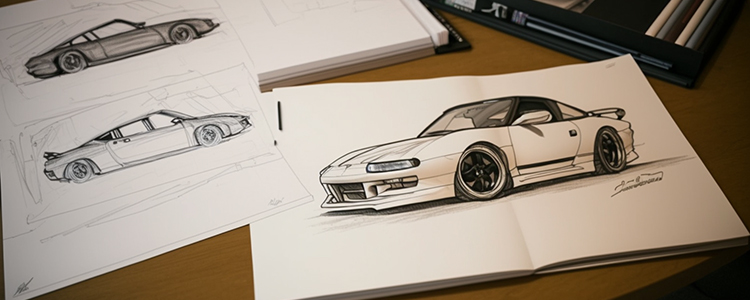





You must Register or Login to post a comment